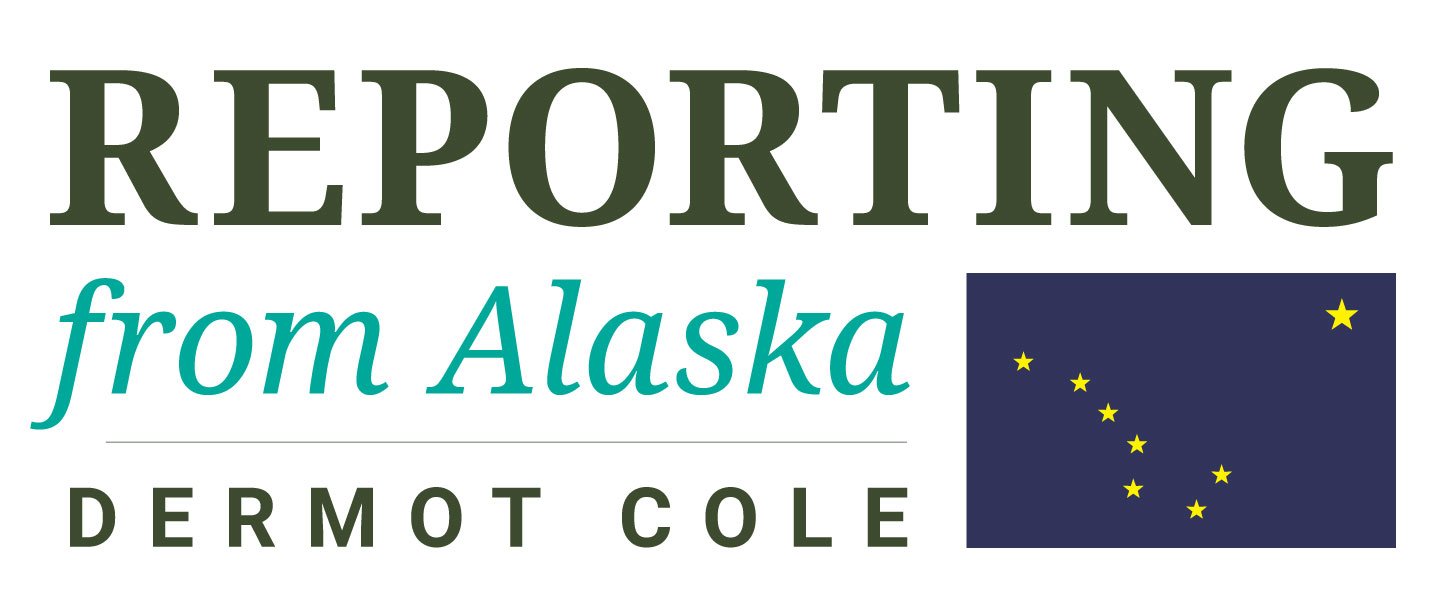Dunleavy exaggerates gas pipeline progress once more
As I wrote here on December 29: The Alaska Gasline Development Corporation can’t find a private company willing to pay $50 million for the final design and engineering work on a proposed gas pipeline unless there is a pledge to get that money back from the state.
But that didn’t stop Gov. Mike Dunleavy and AGDC President Frank Richards from claiming Monday that the state has made a major deal with an unidentified pipeline company to move the pipeline ahead.
“I think we’re entering a phase of reality for this pipeline,” Dunleavy said.
He and Richards all but ignored the reality that the state will pay $50 million for this next stage of pipeline planning work if the company decides against going forward after that.
To present the agreement as a major endorsement by private industry to lead and fund the gas line is misleading. But that’s what happened at Dunleavy’s press conference.
“Today, after 10 years of planning, engineering and permitting, I’m announcing that AGDC has reached an exclusive framework agreement with a qualified energy company to privately lead and fund the development of the Alaska LNG project,” Richards said.
“The next step is for both parties to create legally binding development agreements that will move the project forward,” Richards said.
The binding terms will “advance the project through the next major work effort in a stage-gated decision process.”
What is an exclusive framework agreement?
It is not a promise to build a pipeline. It is a promise to update the engineering and cost calculations of the massive project, work that will cost about $50 million, to see if this idea might be profitable enough for the unnamed company to move to the billions and billions phase.
After completing the final advance design and cost estimates in late 2026, the company will decide if it wants to build a pipeline.
If the company agrees to build at a cost of billions and makes a final investment decision, it will pay the $50 million in planning costs.
If the company refuses to build, the Alaska Industrial Development & Export Authority will pay for the $50 million in design work that will start later this year.
This is no breakthrough. AGDC couldn’t reach this point without a state promise to pick up the tab. If the pipeline company pulls the plug in 2025 or 2026, it will get its $50 million back.
This does not show that private industry is ready and willing to spend tens of billions of dollars to build a pipeline.
Dunleavy and AGDC will tell the Legislature that AGDC deserves to stay in business at least one more year because a pipeline is closer than ever. These are time-tested words.
Dunleavy said Monday he believes a pipeline is “closer to reality than ever.” I agree with him. A pipeline, talked about for more than 50 years, is always closer than ever because it has never been built.
But the dream survives. “This pipeline could very well be the reality that we’ve all been waiting for,” Dunleavy said four years ago in a press release posted by the Anchorage Daily News and the Fairbanks Daily News-Miner.
AIDEA, which has hundreds of millions in securities, agreed to take on the $50 million promise with little discussion about where the money would come from.
After the deal was complete, Dunleavy said he would ask the 2025 Legislature to give AIDEA $50 million. This is $50 million that the Legislature should not give.
The federal oil and gas lease sale in the Arctic National Wildlife Refuge this week will reveal whether the oil industry is actually interested in exploring for fossil fuels there. If business speculators and the Alaska Industrial Development & Export Authority again turn out to be the main bidders, then we’ll know the oil industry has no desire to take on the considerable political, social and economic risks that come with the prospect of ANWR oil development. The lack of real bidders in the 2021 sale was no surprise, given the opposition of the Biden administration to oil development there. This time there won’t be that excuse if the industry refuses to participate in a big way.
Thousands of families will be affected by the proposed closure of five elementary schools in Fairbanks. The decline in enrollment and budget failures by the borough and the state are the biggest factors. The proposal is to close Hunter, Two Rivers, Salcha, Pearl Creek and Midnight Sun. This is going to be contentious and controversial. In this column, Nicky Eiseman suggests a good approach. The school board reviewed the plan in a work session Monday. Here is video of that meeting.
Your contributions help support independent analysis and political commentary by Alaska reporter and author Dermot Cole. Thank you for reading and for your support. Either click here to use PayPal or send checks to: Dermot Cole, Box 10673, Fairbanks, AK 99710-0673.
Write me at dermotmcole@gmail.com.
